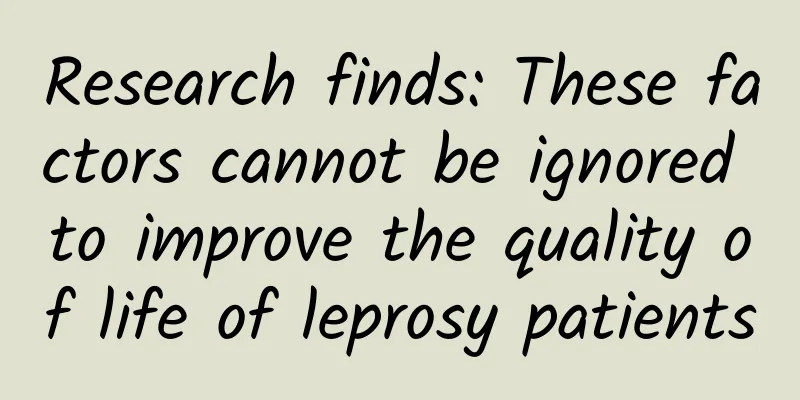This new drug can be called an "anti-cancer missile". How does it change cancer treatment?

|
It is expected that more ADC drugs will be approved for marketing in the next five years. Written by | Li Juan In recent years, a new type of anticancer drug called Antibody-Drug Conjugate (ADC) has made continuous breakthroughs in clinical practice, making it rapidly rise in the field of global innovative drugs. What kind of drug is ADC? Why can it become a new hope for fighting cancer? What are the advantages of ADC drugs compared to chemotherapy? ADC drugs can be figuratively understood as precision missiles that kill tumors. They deliver cytotoxic drugs directly into tumor cells, reducing damage to healthy cells and side effects. It can be said that they "only hit the bad guys and don't hurt passers-by by mistake." The structure of ADC consists of three parts: antibody, linker and cytotoxic drug (payload). Among them, the antibody is the "navigation system" of the missile, responsible for finding tumor cells and delivering cytotoxic drugs into them; the linker is the "safety device" of the missile, which is triggered in a suitable environment (such as acidity or the action of specific enzymes) to release the cytotoxic drugs connected to the antibody; the cytotoxic drugs are the "warheads" of the missile, which, after being released inside the tumor cells, directly destroy them by destroying DNA or preventing cell division. ADC drug structure This design is precise and efficient, and its advantages over traditional chemotherapy are very obvious. However, the development of ADC is a long and tortuous process. As early as the beginning of the 20th century, German physicist and scientist Paul Ehrlich proposed the concept of a "magic bullet", hoping to develop drugs that can accurately destroy specific cells without harming normal cells. However, this vision faces many challenges. It was not until the 1950s that chemical technology breakthroughs made it possible to combine cytotoxic drugs with antibodies. For example, the experiment of combining methotrexate with polyclonal antibodies marked an initial attempt. In the 1970s, the innovation of hybridoma technology promoted the development of monoclonal antibodies (mAbs). In the 1980s, Greg Winter pioneered humanized monoclonal antibody technology, laying the foundation for ADCs. ADCs of this period showed good results in models. However, ADC clinical trials were frustrated by drug toxicity and insufficient efficacy. It was not until 2000 that the first ADC drug, gemtuzumab ozogamicin, was approved by the US FDA. It was initially used to treat relapsed and/or refractory acute myeloid leukemia, but was withdrawn from the market in 2010 due to adverse events. ADC is challenging due to its complex structure, but research in this field has never stopped. More than a century after Ehrlich proposed the concept of the "magic bullet", ADC technology has ushered in a new dawn. In 2011, the ADC drug brentuximab was approved. This drug can target and kill tumor cells by targeting the protein molecule CD30 on the surface of lymphoma cells. It is used to treat Hodgkin's lymphoma and anaplastic large cell lymphoma. In 2013, trastuzumab emtansine (T-DM1), which targets HER2 (a protein molecule overexpressed on the surface of some breast cancer cells), was approved for the treatment of breast cancer. These milestones have demonstrated the potential of ADC and promoted the rapid development of this field. At present, the US FDA has approved as many as 12 ADC drugs for marketing (Table 1). There are a total of 5 ADC drugs on the market in China. Since 2020, Adcetris, Kadcyla, Besponsa, Trodelvy, and Enhertu have been approved for marketing in China. Among them, the first ADC new drug independently developed by a Chinese company, Aidixi, was approved for marketing in 2021, and its two indications of gastric cancer and urothelial carcinoma have been included in the national medical insurance drug catalog. In recent years, the ADC field has attracted much attention, and it is expected that more ADC drugs will be approved for marketing in the next five years. Table 1 ADC drugs approved by the FDA (as of December 2024). Among them, the target refers to the antigen molecule on the surface of tumor cells, the drug load refers to the cytotoxic drug, and the drug-antibody ratio (DAR) refers to the number of cytotoxic drug molecules connected to one antibody molecule. 丨 Source: The author of this article How do ADC drugs kill tumor cells? As a "missile that precisely strikes tumors", how does ADC work? Let's understand it from its "operation process": First, after ADC is injected into the body, it will exist in three forms. Among them, the main active form is a complete conjugate - the antibody and cytotoxic drug are combined together through a stable linker to ensure efficacy and stability. In addition, there will be some antibodies that fail to successfully bind to the drug during the production process. Due to the instability of the linker, some cytotoxic drugs may fall off the antibody and float freely in the body. Next, when the antibody part of the ADC binds to the target on the surface of the tumor cell, the entire molecule will be "swallowed" by the cell and internalized into the cell. Whether the target is easily internalized and the efficiency of this process will directly affect the activity of the ADC. Finally, after entering the cell, the ADC enters the cell's lysosomes or endosomes. In these environments, cytotoxic drugs are released from the antibody due to acidic conditions, proteolysis, or chemical reactions. The drug then diffuses into the cytoplasm, acts on specific targets, and ultimately kills the tumor cell. Because the drug payload of some ADCs is hydrophobic, it can penetrate the cell membrane. This means that even neighboring tumor cells that do not express the ADC target may be killed due to drug diffusion. This "bystander effect" is particularly important when tumor cell targets are unevenly expressed. It is worth noting that the antibody in ADC is not only a "carrier" of the drug, but also has its own functions: it can bind to the target of tumor cells and interfere with the signal transduction of tumors; it can bind to immune cells (such as natural killer cells, NK) and activate anti-tumor immune response - such multiple mechanisms can enhance the efficacy of ADC. However, for some ADCs, its specific contribution still needs further study. The main process of ADC exerting its efficacy. | Source: THE LANCET How to design ADC drugs with better efficacy? Through the above "operation process", we can see that every step of ADC in the body delicately affects the balance of efficacy. For developers, what challenges will they face in building a sophisticated ADC "missile"? First of all, we need to pick the right "enemy" and choose the right target. The primary task of ADC is to find and lock on tumor cells. A good target is like a unique marker on tumor cells, which only appears on tumor cells or tumor areas and is almost absent on healthy cells. This ensures that ADC will not disturb normal body tissues as much as possible when performing its tasks. Secondly, we need to build a "navigation truck" and prepare high-quality antibodies. This "truck" must not only be able to accurately find the target tumor cells, but also be strong and durable enough and have good biological properties to ensure that the drugs are delivered to their destination safely and efficiently. Third, precise docking must be achieved to ensure that the antibody binding ability is strong enough. Whether the "truck" is tightly docked with the target is directly related to whether the ADC can successfully enter the tumor cell and implement "precision strike". If the docking is not firm, the ADC may fail halfway and fail to effectively enter or destroy the tumor cell. Fourth, it is necessary to select a powerful "warhead" to ensure the effectiveness of the payload. The cytotoxic "warhead" carried by the ADC must be strong enough to ensure that it hits the target and kills the tumor cells. However, excessive power may also bring risks, so it is necessary to find a perfect balance between effectiveness and safety. Fifth, we need to design a reliable "bridge" and select the right linker. The linker is like a "bridge" between the antibody and the drug. It must be stable enough to ensure that the drug is not released prematurely in the blood circulation, and it must be able to release the "warhead" in time after entering the tumor cell to allow the drug to take effect. This requires the design of the linker to be both "stable" and "relaxable". Sixth, precise loading should be achieved to optimize the binding sites and quantity of drugs and antibodies. The binding site between drugs and antibodies is critical, as it affects the stability and release timing of the drug. If the binding site is not correct, the drug may "derail" prematurely, increasing damage to healthy tissues. The number of drugs loaded on each antibody (DAR) must also be carefully regulated. Too little will not achieve therapeutic effect, while too much may cause ADC instability, affect efficacy and increase toxicity. What are the representative ADC drugs? As research continues to deepen, ADC drug design has been optimized generation by generation (Table 2), and new research results and candidate drugs have continued to emerge. The development of the new generation of ADCs has achieved a number of technological breakthroughs. Researchers and developers have optimized and improved the performance of the three components that make up ADCs one by one, making this "missile" targeting tumor cells more powerful: In terms of antibodies, humanized antibodies and site-specific conjugation technology are used to significantly reduce immunogenicity and improve tumor targeting; In terms of linkers, the introduction of cleavable linkers enables controlled release of drugs under specific conditions, enhancing the precision of treatment. The latest technology is further optimizing linker stability and reducing the risk of nonspecific release. In terms of cytotoxic drugs, the latest technology uses more potent cytotoxic drugs and diversified indication strategies, such as topoisomerase I inhibitors and high drug antibody loads to improve efficacy. Table 2 Characteristics of ADC drug development stages | Source: Author For example, Enhertu and Kadcyla, ADC drugs for the treatment of breast cancer, represent the results of different development stages of HER2-targeted ADC technology (Table 3). As a new generation of ADC, Enhertu has significantly broadened the treatment scope and benefited cancer patients with low HER2 expression by virtue of its high drug-antibody ratio and bystander effect. Kadcyla is the first batch of successful HER2-targeted ADCs, focusing on the treatment of HER2-positive breast cancer, with mature technology and mild side effects. On June 2, 2024, the results of the pivotal clinical trial (DESTINY-Breast 03) of the above two ADC drugs for the treatment of HER2-positive breast cancer and HER2-low-expressing breast cancer were published in Nature Medicine, from which the advantages of the latest generation of ADC drugs can be seen. HER2-positive breast cancer is a highly malignant type of breast cancer. A large amount of HER2 protein is expressed in the patient's body. Although traditional therapies (such as the monoclonal antibody drug trastuzumab) can target HER2, they have limited effects on advanced patients or drug-resistant cases. In the DESTINY-Breast03 trial, Enhertu demonstrated excellent efficacy in patients with HER2-positive advanced breast cancer who had previously received multiple lines of treatment. The objective response rate (ORR) of patients in the Enhertu group reached 78.5%, significantly higher than that of the Kadcyla control group (ORR was only 34.2%); the progression-free survival (PFS) of the Enhertu group was 29 months, while that of the control group was 7.2 months; the median overall survival of the Enhertu group was 52.6 months, while that of the control group was 42.7 months. It can be seen that the new generation of ADC drug Enhertu has greatly prolonged the time without disease progression in patients and improved the prognosis of drug-resistant patients. In addition, Enhertu has been shown to have significant efficacy in other series of DESTINY trials for HER2-low-expressing breast cancer. This patient population has traditionally not been considered suitable for HER2-targeted therapy, but Enhertu breaks this limitation and further expands the concept of precision medicine to more patient groups. Table 3 Comparison of representative ADC drugs targeting HER2. Conclusion From the above examples, we can see that ADC drugs have redefined the possibilities of cancer treatment. With their excellent precision, powerful lethality and innovative design concepts, they are the perfect fusion of modern medicine and science and technology. As competition in the ADC drug market becomes increasingly fierce, how to stand out among numerous candidate drugs has become a key issue that developers must face. How to further optimize off-target toxicity and reduce potential toxic side effects remains the focus of current research. In order to build core competitiveness, developers need to carry out comprehensive innovation and optimization in target selection, platform technology, indication selection, clinical design, and project planning. Only in this way can ADCs with higher efficacy be introduced into clinical practice and bring more benefits to cancer patients. Note: The cover image of this article comes from the copyright library. Reprinting and using it may cause copyright disputes. Special Tips 1. Go to the "Featured Column" at the bottom of the menu of the "Fanpu" WeChat public account to read a series of popular science articles on different topics. 2. Fanpu provides a function to search articles by month. Follow the official account and reply with the four-digit year + month, such as "1903", to get the article index for March 2019, and so on. Copyright statement: Personal forwarding is welcome. Any form of media or organization is not allowed to reprint or excerpt without authorization. For reprint authorization, please contact the backstage of the "Fanpu" WeChat public account. |
<<: The basis for growing taller is not calcium, but this...
>>: Urine test: You need to know these points
Recommend
Why are my lips getting thicker?
The mouth can be said to be a small organ in our ...
Is a pimple on a woman's private parts a sexually transmitted disease?
Pimples can appear anywhere on the body. They are...
What causes women's ankles to be cold?
Many women have cold feet, but do you know what c...
What causes menstrual back pain in women?
When the menstrual period comes, many women will ...
Feeling of uterine pain
Uterine distension and pain needs to be divided i...
Can I eat black chicken during menstruation?
I don't know all of this, but women's men...
How to use contraception in the safest and healthiest way
Young couples and lovers should always be in high...
Can snow pears be eaten with honey? What is the effect of steaming pears and rock sugar?
When juicing apples and pears, first wash the app...
A few words | A girl drowned after getting first place in the exam and being questioned by her teacher. Adversity education is essential
2021.1.4 Hot Topics: On January 3, Ms. Li from Qi...
Why is the Begonia flower called the Heartbreak Flower? How to grow Begonia flowers in summer
Begonia is an ornamental plant unique to my count...
What are the symptoms of pubic folliculitis? Are you affected by these?
In daily life, women must pay attention to the hy...
What should I do if my period is delayed for five days?
Some female patients have health problems, so fem...
Eating more dietary fiber can help reduce inflammation levels in the body! Which foods have good anti-inflammatory effects?
Inflammation is the common "soil" for m...
How to treat thin endometrium after abortion
How to treat thin endometrium after abortion? Thi...









